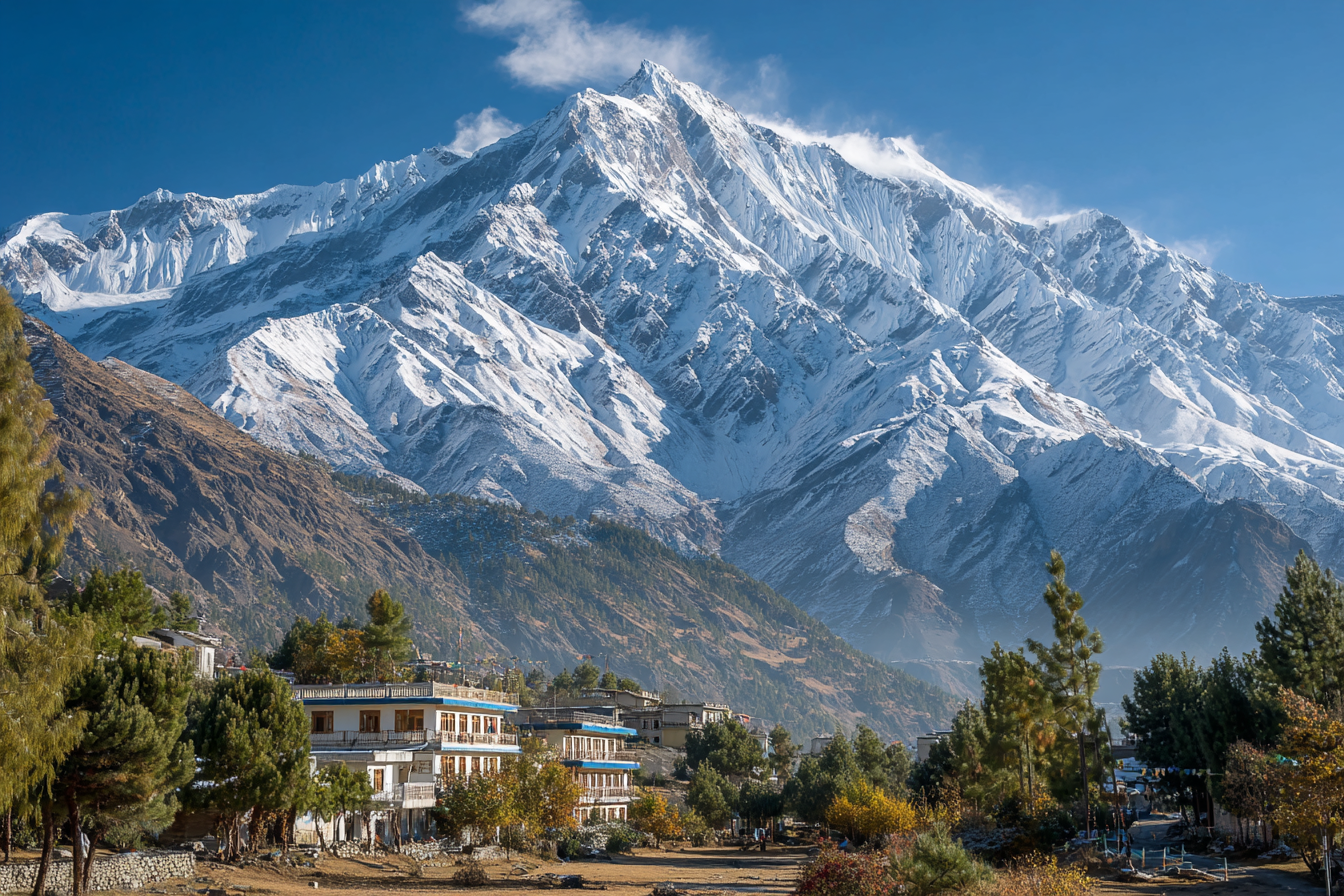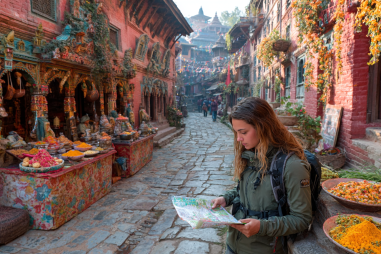Planning a trip to Jomsom, a stunning town nestled in Nepal’s Mustang region, means you’ll want to stay ahead of the weather. The climate here can be quite variable, especially given its elevation and mountainous surroundings. Accurate and up-to-date weather forecasts are essential for travelers, especially those aiming to trek, explore, or catch flights between Jomsom and other destinations like Pokhara or Kathmandu. This guide will help you understand the typical weather patterns, how conditions might impact your plans, and where to find the latest forecasts to ensure a safe and enjoyable visit.
Typical Seasonal Weather Patterns in Jomsom
Jomsom experiences a distinct seasonal variation influenced by its altitude of approximately 2,700 meters (8,850 feet) and its location in a rain shadow valley. Understanding these patterns is key to preparing for your trip.
Spring (March to May): This season is one of the best times to visit Jomsom. The weather starts warming up after the colder winter months, and you’ll see blooming rhododendrons and other alpine flora. Daytime temperatures typically range from 15°C to 20°C (59°F to 68°F), but nights can still be chilly. The skies are mostly clear, ideal for trekking and sightseeing.
Summer/Monsoon (June to August): Unlike much of Nepal, Jomsom is relatively dry due to its position in the rain shadow of the Annapurna and Dhaulagiri ranges. However, occasional monsoon rains can occur, especially later in the season, leading to some slippery trails and possible delays. Temperatures hover between 20°C and 25°C (68°F to 77°F), with higher humidity and intermittent clouds.
Autumn (September to November): Arguably the most popular season for trekking, autumn offers stable and clear weather, with pleasant daytime temperatures from 15°C to 22°C (59°F to 72°F) and cool nights. This period boasts excellent visibility, making it perfect for mountain views.
Winter (December to February): Winters are cold and dry, with temperatures dropping below freezing at night, sometimes as low as -10°C (14°F). Daytime temperatures are milder, around 5°C to 10°C (41°F to 50°F). Snowfall is occasional but can make trekking more challenging, especially at higher passes.
How Weather Affects Trekking and Travel Plans
The weather in Jomsom plays a critical role in shaping your travel itinerary, particularly if you are trekking or using the local flights. Sudden weather changes can affect trail conditions, making some routes slippery, icy, or impassable. It’s essential to monitor forecasts so you can anticipate and adjust your plans accordingly.
For trekkers, visibility and trail safety are top priorities. Clear weather allows for stunning panoramic views of the Himalayas, including iconic peaks like Annapurna and Dhaulagiri. On the other hand, rain or early snow can obscure paths and increase the difficulty level. Carrying appropriate gear, such as waterproof clothing and warm layers, is a must during transitional seasons.
Travel by air is another factor affected by Jomsom’s weather. The local airport is notorious for flight delays and cancellations due to fog, high winds, or low clouds that reduce visibility. Morning flights typically have better chances of operating as winds pick up later in the day. Always have backup plans or extra buffer time when booking flights.
Tools and Websites for Up-to-Date Forecasts
Reliable weather information is essential for making informed decisions while in Jomsom. Fortunately, several trustworthy sources provide up-to-date forecasts tailored to mountainous regions:
- AccuWeather: Provides detailed and updated forecasts, including hourly and 10-day outlooks with temperature, wind speed, and precipitation chance.
- Weather.com (The Weather Channel): Offers comprehensive weather updates with added radar maps and alerts.
- MeteoNepal: Nepal’s official meteorological center publishes regional weather reports that can be especially useful for understanding monsoon trends and temperature shifts.
- Mountain-specific apps like Windy and Mountain Forecast: These apps specialize in mountainous weather, highlighting wind speeds and sudden changes that are critical for trekking and flying.
Checking multiple sources can give you a more balanced understanding, and be sure to update your information regularly, particularly before heading into remote areas.
Interpreting Mountain Weather Signals
Mountain weather can be notoriously unpredictable. Learning how to interpret natural signs can enhance your safety and help you plan your day:
- Cloud formations: An increase in fluffy white clouds that start to thicken and lower may indicate an approaching weather front, possibly rain or snow. Thin, wispy clouds often suggest stable weather.
- Wind changes: Sudden gusts or shifts in wind direction can precede storms. Gusty winds usually mean deteriorating conditions, so consider seeking shelter.
- Temperature drops: Rapid temperature decreases during the day might signal an incoming cold front or storm.
- Visibility: If visibility suddenly drops due to fog or mist, it’s better to pause trekking or flying plans to avoid risks.
Listening to local guides and experienced trekkers can also provide valuable on-the-ground insights about changing weather conditions.
Weather-Related Travel Tips
When visiting Jomsom, keeping a few practical tips in mind will improve your experience and safety:
- Pack for layering: Temperature swings are common, so bring layers that you can add or remove easily.
- Plan flights early in the morning: Most flight delays happen due to afternoon winds and cloud buildup.
- Check weather updates daily: Mountain weather can change quickly, so daily updates help you stay ahead of any risks.
- Carry waterproof gear: Even if rain is unlikely, a light waterproof jacket and covers for your gear can be lifesavers.
- Allow flexibility in your itinerary: Build in extra days to accommodate weather-related delays or route changes.
- Stay hydrated and acclimated: Weather conditions affect your body, so drink enough water and rest as necessary.
When to Expect Road or Flight Delays Due to Weather
Because Jomsom is located in a mountainous region with limited transport infrastructure, weather can easily lead to delays:
Flight delays: The Jomsom airport often experiences cancellations or delays during fog, heavy winds, and low visibility. Late monsoon and winter seasons are most prone to these disruptions. It is common for flights to be rescheduled to the next day, so always be prepared with accommodations and flexibility.
Road travel: The rough and sometimes narrow roads connecting Jomsom to other parts of Nepal can become hazardous during rain or snowfall. Landslides are a risk during the monsoon season and early autumn. Travelers should check local road conditions before embarking on drives or jeep safaris.
Staying informed about weather forecasts, contacting transport providers in advance, and keeping an open mind about changes in itinerary can reduce the stress and inconvenience caused by weather delays.
Stay Informed for a Successful Trip
Jomsom’s breathtaking landscapes make it a fantastic destination for adventurers and culture seekers alike, but its weather demands respect and careful preparation. By understanding the seasonal patterns, interpreting mountain weather signs, and regularly consulting reliable forecasts, you can optimize your travel plans and stay safe. Whether you’re trekking the ancient pathways, flying across stunning valleys, or simply exploring the local culture, staying well-informed about the weather in Jomsom will help ensure a memorable and trouble-free visit.







